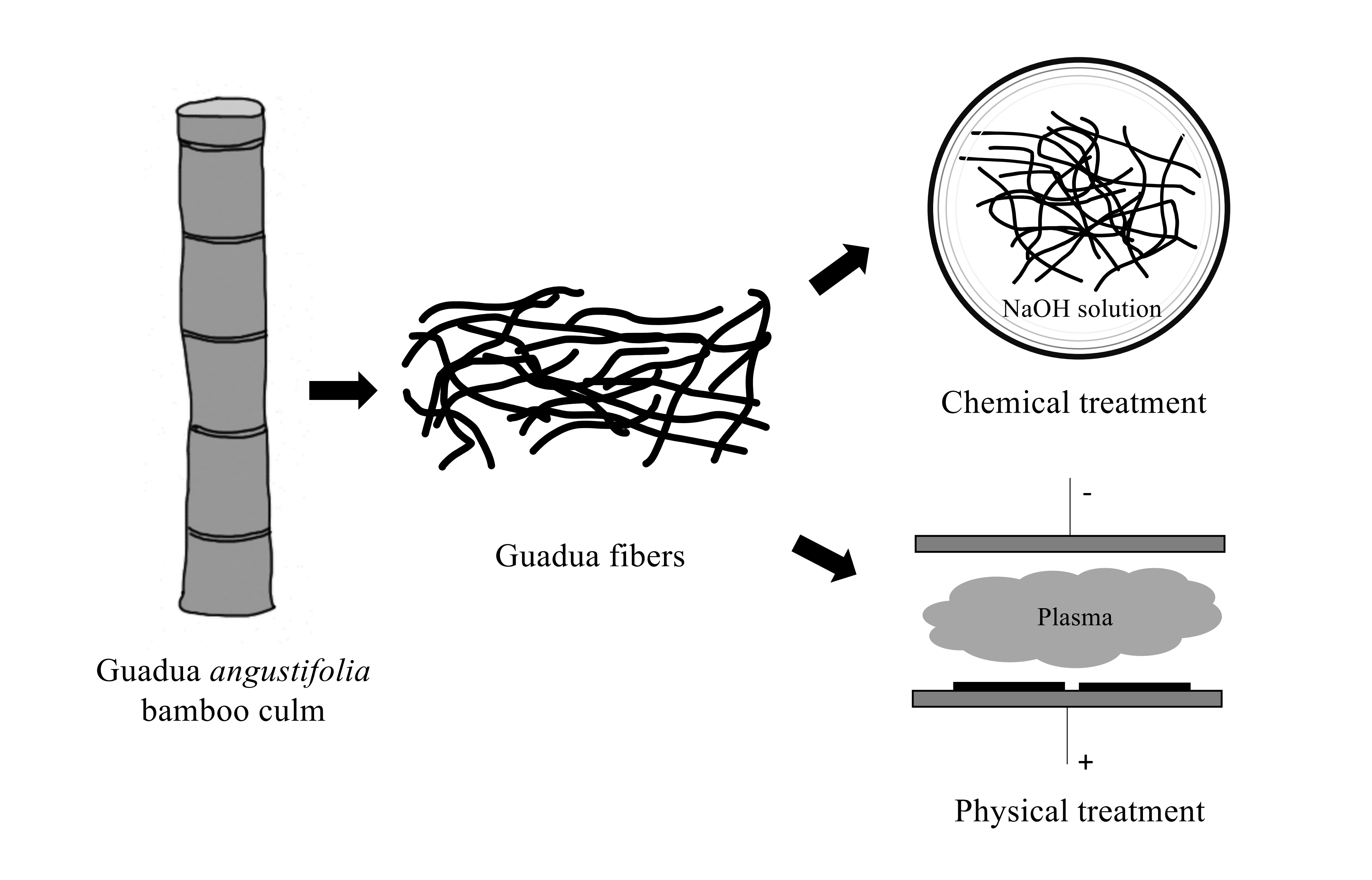 Open Access
Open Access
ARTICLE
Alkali and Plasma-Treated Guadua angustifolia Bamboo Fibers: A Study on Reinforcement Potential for Polymeric Matrices
1 Facultad de Ingeniería, Universidad Nacional de Colombia, Bogotá, 11001, Colombia
2 Facultad de Ciencias, Universidad Nacional de Colombia, Bogotá, 11001, Colombia
* Corresponding Author: Patricia Luna. Email:
Journal of Renewable Materials 2024, 12(8), 1399-1416. https://doi.org/10.32604/jrm.2024.052669
Received 10 April 2024; Accepted 11 June 2024; Issue published 06 September 2024
Abstract
This study focuses on treating Guadua angustifolia bamboo fibers to enhance their properties for reinforcement applications in composite materials. Chemical (alkali) and physical (dry etching plasma) treatments were used separately to augment compatibility of Guadua angustifolia fibers with various composite matrices. The influence of these treatments on the fibers’ performance, chemical composition, and surface morphology were analyzed. Statistical analysis indicated that alkali treatments reduced the tensile modulus of elasticity and strength of fibers by up to 40% and 20%, respectively, whereas plasma treatments maintain the fibers’ mechanical performance. FTIR spectroscopy revealed significant alterations in chemical composition due to alkali treatments, while plasma-treated fibers showed minimal changes. Surface examination through Scanning Electron Microscopy (SEM) revealed post-treatment modifications in both cases; alkali treatments served as a cleanser, eliminating lignin and hemicellulose from the fiber surface, whereas plasma treatments also produce rough surfaces. These results validate the impact of the treatments on the fiber mechanical performance, which opens up possibilities for using Guadua angustifolia fibers as an alternative reinforcement in composite manufacturing.Graphic Abstract

Keywords
Cite This Article
 Copyright © 2024 The Author(s). Published by Tech Science Press.
Copyright © 2024 The Author(s). Published by Tech Science Press.This work is licensed under a Creative Commons Attribution 4.0 International License , which permits unrestricted use, distribution, and reproduction in any medium, provided the original work is properly cited.


 Submit a Paper
Submit a Paper Propose a Special lssue
Propose a Special lssue View Full Text
View Full Text Download PDF
Download PDF Downloads
Downloads
 Citation Tools
Citation Tools